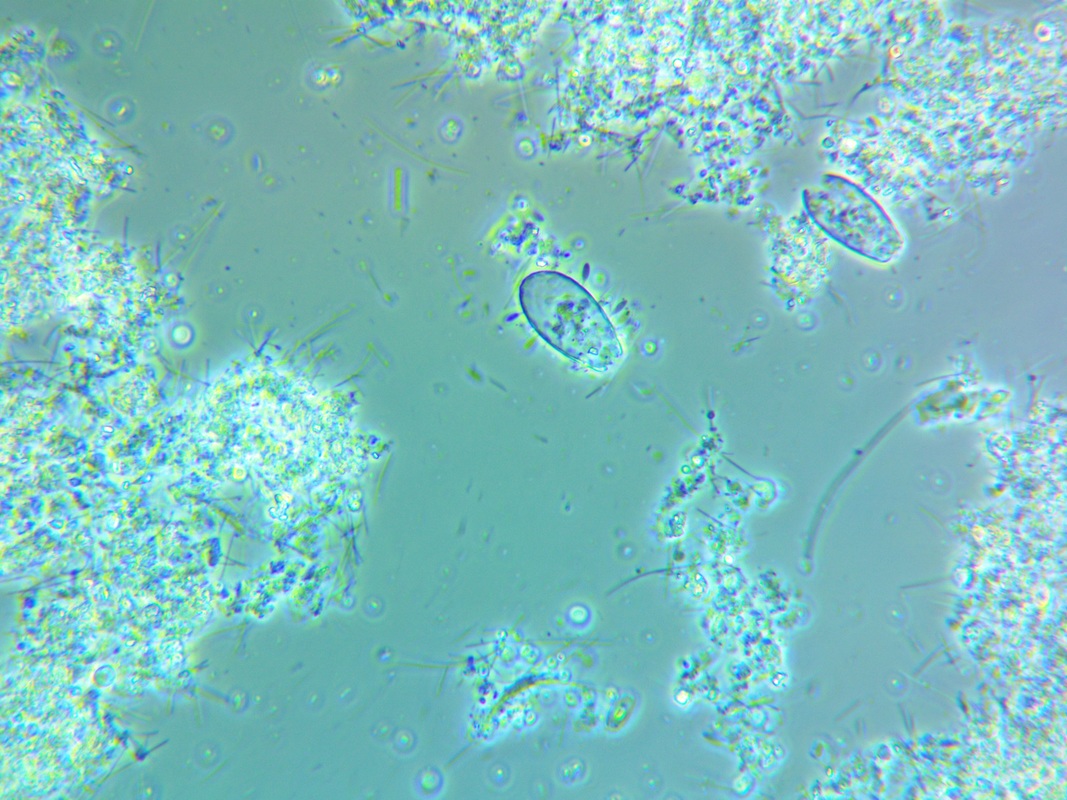- Living microbes - what "does the work"
- Dead microbes
- Biological polymers - called Extracellular Polymeric Substances (EPS)
- Inorganics (dirt, sand, etc)
- Insoluble organics (Fats, long chain fatty acids, larger solids)
- Reduce solids going to wasting - extended aeration produces fewer solids when compared to conventional ASU. In effect, you are moving aerobic digestion into the activated sludge unit.
- Increase resistance to shock loadings by offering more MLSS to adsorb influent organics
Why would you not want to increase MLSS?
- More energy required to maintain DO residuals. While standardized respiration rates (SOUR) does drop, the biological solids still use oxygen during endogenous respiration.
- Secondary clarifier solids handling - clarifiers are designed for a target amount of solids. Run MLSS too high and you get problems with carryover, rake torque issues, and anaerobic solids.
- Filaments can increase with low F/M and low DO - end result is solids problems in the clarifier.
- Look at design manual for F/M and MCRT ranges
- Monitor respiration rates, settling rates (SV30), microscopic exam, and treatment efficiency to keep sludge in proper growth stage. Normally this means decline phase growth extending into endogenous respiration.


 RSS Feed
RSS Feed